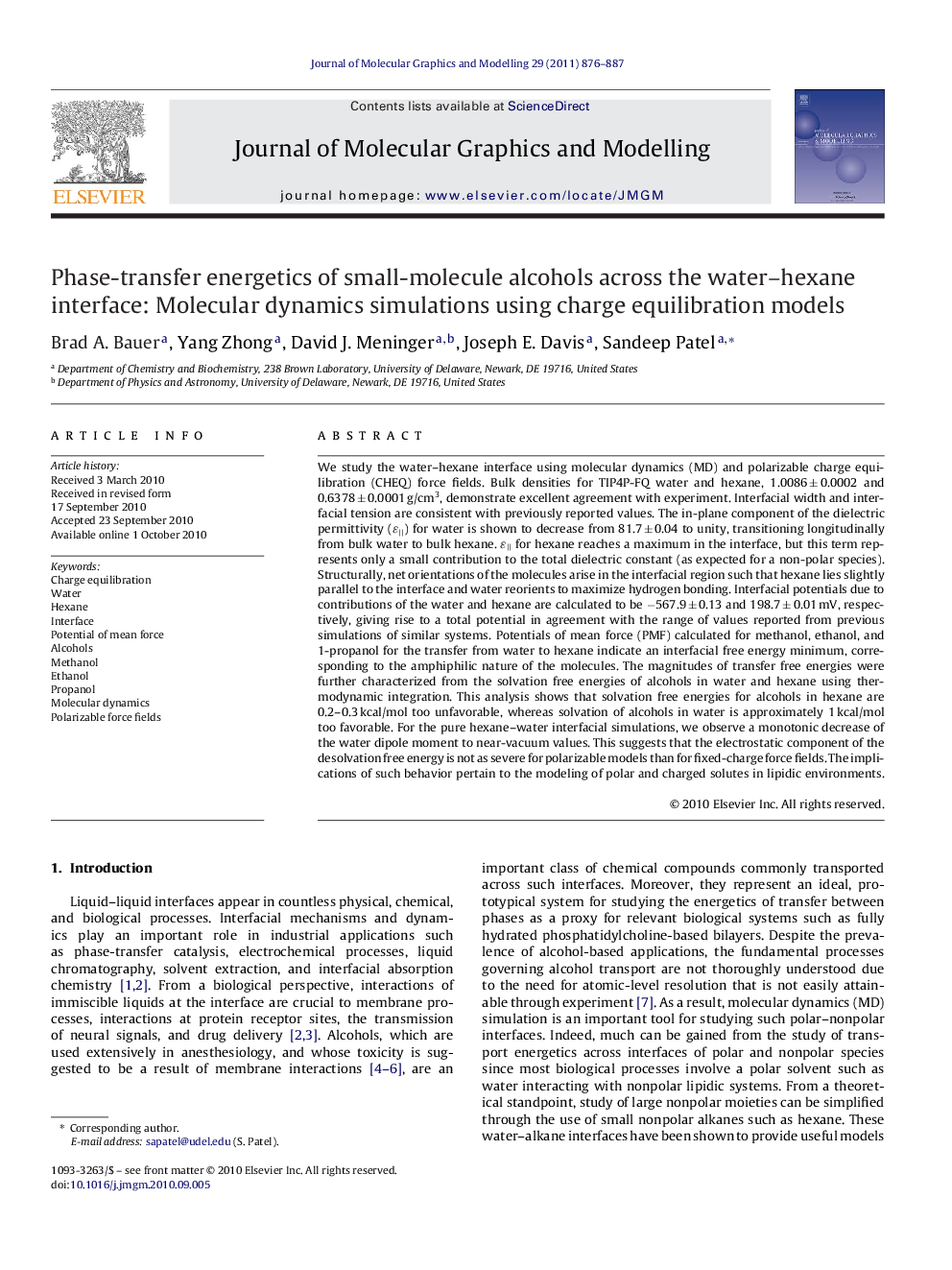| کد مقاله | کد نشریه | سال انتشار | مقاله انگلیسی | نسخه تمام متن |
|---|---|---|---|---|
| 443764 | 692764 | 2011 | 12 صفحه PDF | دانلود رایگان |

We study the water–hexane interface using molecular dynamics (MD) and polarizable charge equilibration (CHEQ) force fields. Bulk densities for TIP4P-FQ water and hexane, 1.0086 ± 0.0002 and 0.6378 ± 0.0001 g/cm3, demonstrate excellent agreement with experiment. Interfacial width and interfacial tension are consistent with previously reported values. The in-plane component of the dielectric permittivity (ɛ||) for water is shown to decrease from 81.7 ± 0.04 to unity, transitioning longitudinally from bulk water to bulk hexane. ɛ|| for hexane reaches a maximum in the interface, but this term represents only a small contribution to the total dielectric constant (as expected for a non-polar species). Structurally, net orientations of the molecules arise in the interfacial region such that hexane lies slightly parallel to the interface and water reorients to maximize hydrogen bonding. Interfacial potentials due to contributions of the water and hexane are calculated to be −567.9 ± 0.13 and 198.7 ± 0.01 mV, respectively, giving rise to a total potential in agreement with the range of values reported from previous simulations of similar systems. Potentials of mean force (PMF) calculated for methanol, ethanol, and 1-propanol for the transfer from water to hexane indicate an interfacial free energy minimum, corresponding to the amphiphilic nature of the molecules. The magnitudes of transfer free energies were further characterized from the solvation free energies of alcohols in water and hexane using thermodynamic integration. This analysis shows that solvation free energies for alcohols in hexane are 0.2–0.3 kcal/mol too unfavorable, whereas solvation of alcohols in water is approximately 1 kcal/mol too favorable. For the pure hexane–water interfacial simulations, we observe a monotonic decrease of the water dipole moment to near-vacuum values. This suggests that the electrostatic component of the desolvation free energy is not as severe for polarizable models than for fixed-charge force fields. The implications of such behavior pertain to the modeling of polar and charged solutes in lipidic environments.
Figure optionsDownload high-quality image (298 K)Download as PowerPoint slideResearch highlights
► Charge equilibration force field for PMF of alcohols across polar–nonpolar interface.
► Captures experimental transfer free energy trends.
► PMF consistent with thermodynamic integration predictions.
Journal: Journal of Molecular Graphics and Modelling - Volume 29, Issue 6, April 2011, Pages 876–887